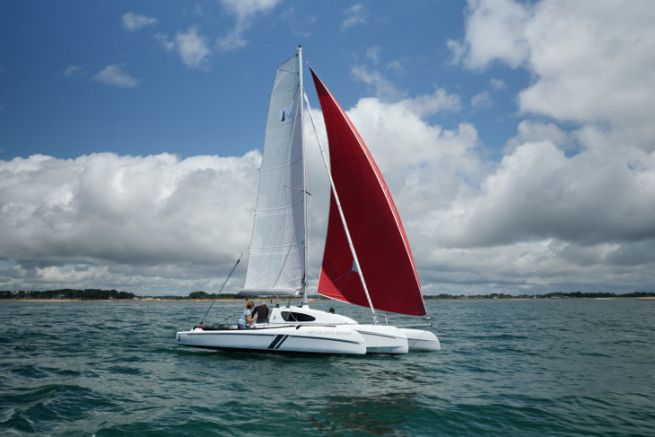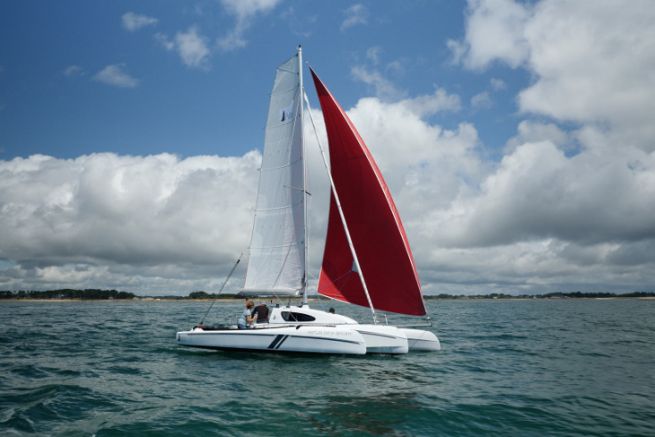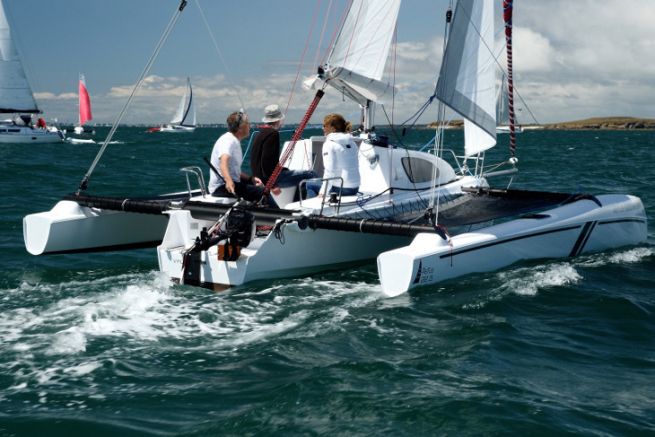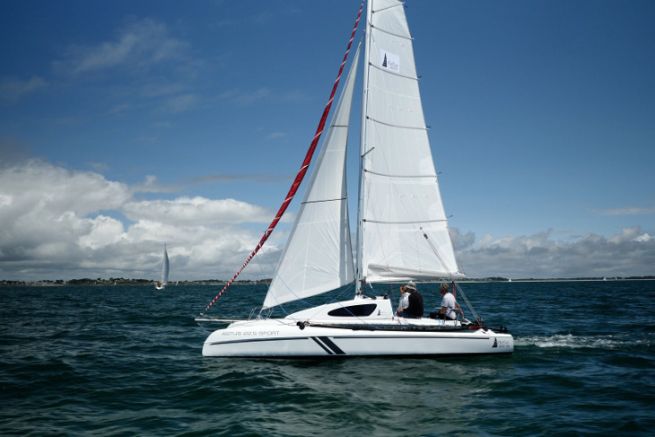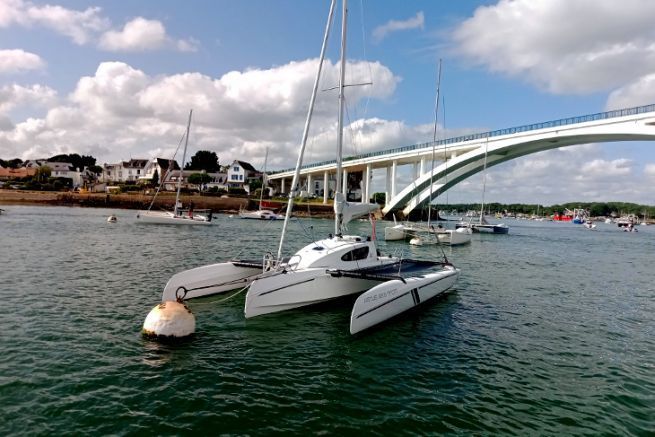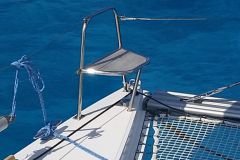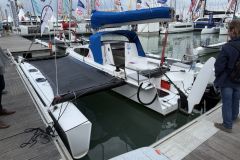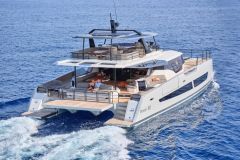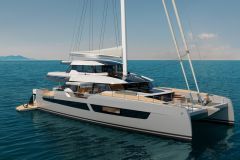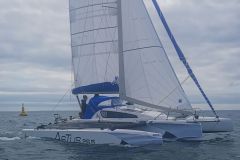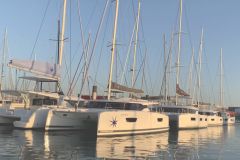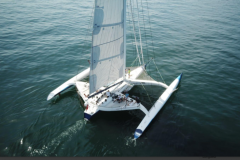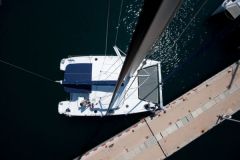A range of trimarans brought up to date
With the launch of the Astus 22.5, the Astus Boats shipyard completes the renovation of its trimaran range begun in 2016. The Morbihan-based builder worked, as for the Astus 16.5 and Astus 20.5, with the naval architecture firm VPLP Design, whose know-how in racing multihulls, as well as cruising multihulls, is no longer to be demonstrated. The new model has the same aesthetics as its younger brothers, but with a more modern family look. The few extra feet even allow a more elegant integration of the roof, proportionally more discreet than on the Astus 20.5. The floats have a tighter rear shape, with a volume of 1150 liters each. They testify to the hydrodynamic work and the desire to compromise speed and safety in the shipyard's specifications.

A transportable sailboat for small cruising
Thanks to its size, the Astus 22.5 allows the difficult synthesis between lightness and accommodation. Large enough, it is equipped with the fundamentals for small cruising, with 4 berths and a small kitchen block. Small enough, it keeps a measured displacement. The 720 kg trimaran can thus take place on a trailer behind the vehicle of a nomadic sailor. It opens the whole field of navigations sought with a transportable boat. The boat is approved for 5 people in design category C.
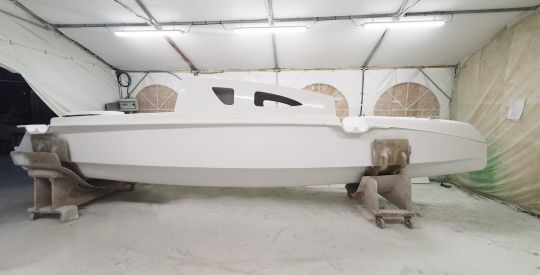
The basics of Astus Boats multihulls
If the Astus 22.5 brings to the 22 feet the innovations of its little brothers, like its floats with marked wave piercing shapes and its tighter hull lines, it keeps the fundamentals of the shipyard. Built in infusion, the boat is made of fiberglass.
The system of telescopic beams, which has been identical since the creation of the construction site, makes it possible to go from a navigational width of 4.70 m to 2.52 m in about ten minutes, in compliance with the road gauge. The tubes located on the bridge do not cross the living area, avoiding any risk of water ingress.
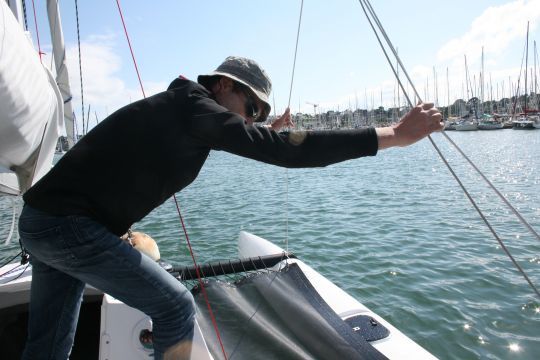
The pivoting daggerboard, slightly offset from the axis of the main hull to free up space, retains its lifting system using 2 simple lines, one of which serves as a fuse in case of a heel. A welcome safety feature with the speeds of trimarans. Once the appendage and the rudder are up, the trimaran can easily beached.

 /
/ 